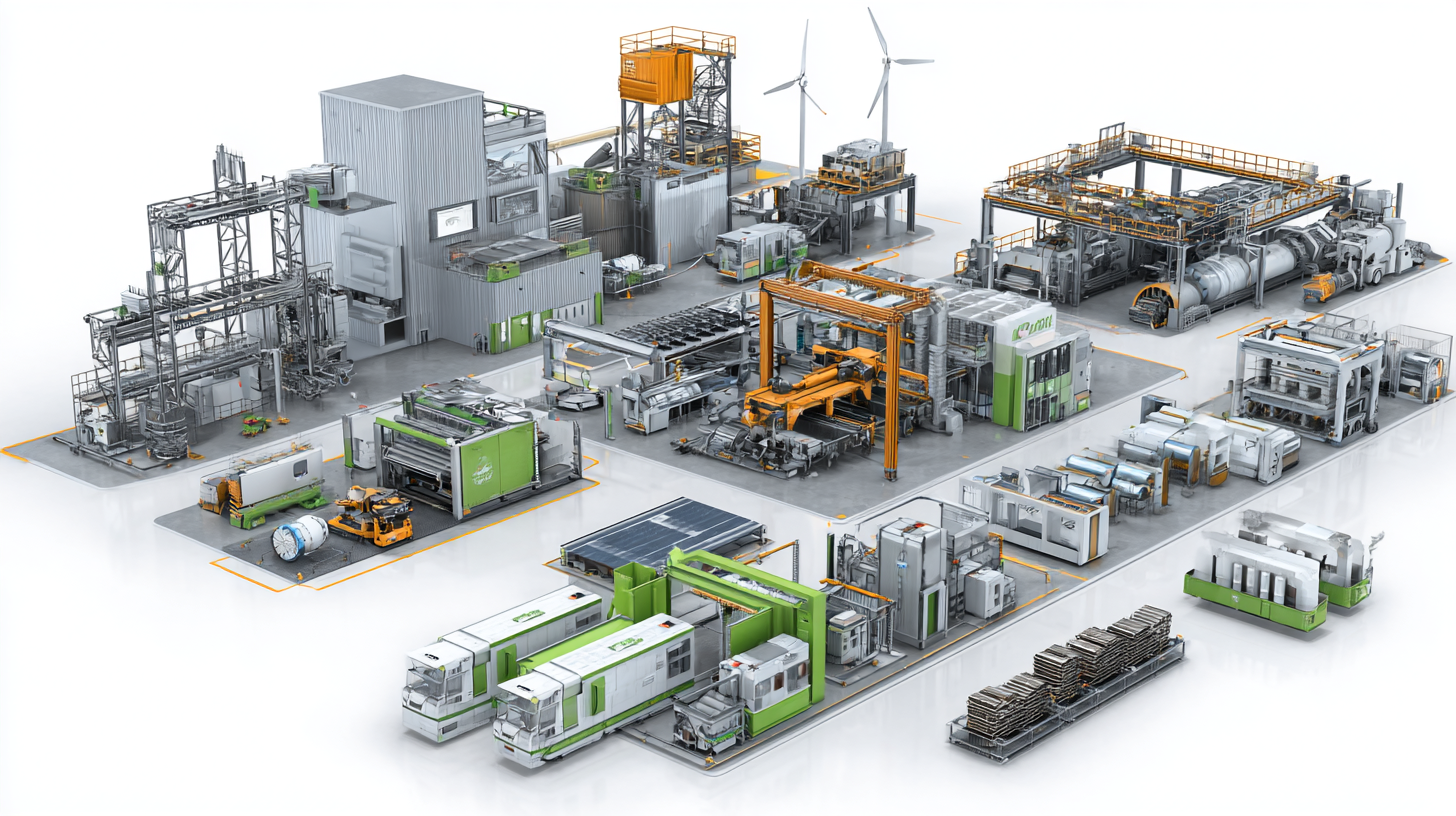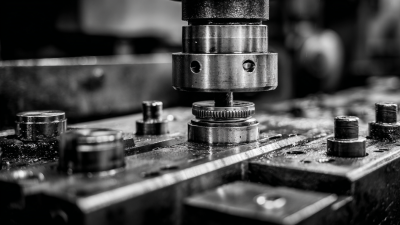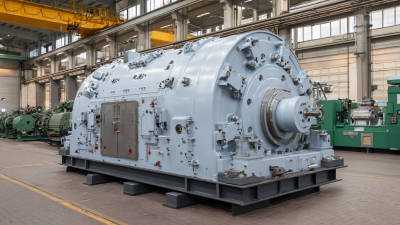The Future of Industrial Supplies and Equipment in a Sustainable World
As industries around the globe shift towards sustainability, the landscape of industrial supplies and equipment is undergoing transformative changes. According to the International Energy Agency (IEA), global energy investment in renewables rose to $350 billion in 2020, highlighting a significant trend towards sustainable sources. This shift necessitates a reevaluation of the types of industrial supplies and equipment utilized, emphasizing those that not only enhance operational efficiency but also reduce the ecological footprint.

Furthermore, a report from MarketsandMarkets indicates that the green building materials market alone is projected to reach $650 billion by 2027, driven by the need for environmentally conscious construction practices. This surge underlines the critical role that sustainable industrial supplies and equipment will play across various sectors, from manufacturing to construction. By incorporating innovative materials and eco-friendly technologies, businesses can align themselves with global sustainability goals while meeting regulatory demands and consumer expectations.
In this context, our exploration of "The Future of Industrial Supplies and Equipment in a Sustainable World" aims to identify the top ten trends and innovations shaping this vital sector. By understanding these emerging dynamics, companies can position themselves strategically for a sustainable future, ensuring they remain competitive in an increasingly eco-conscious marketplace.
Innovative Technologies Driving Sustainability in Industrial Supplies
The industrial landscape is undergoing a transformation fueled by innovative technologies aimed at enhancing sustainability. As manufacturing companies increasingly embrace digital innovation, policies focusing on supply chain advancements are proving pivotal. These innovations not only uplift organizational intention to invest in sustainable practices but also ensure that corporate innovation remains aligned with sustainability goals. For instance, the integration of AI and IoT facilitates the optimization of resource management, leading to significant reductions in waste and emissions.
Moreover, the Eco-Tech Revolution, characterized by initiatives such as the Beautiful China 2025 blueprint, underscores the importance of sustainable innovation across various sectors. The focus on carbon capture technologies and sustainable materials is reshaping industrial supplies, promoting a circular economy that minimizes environmental impact. Industries such as textiles, mining, and food and beverage are at the forefront of this shift, utilizing advanced techniques to meet consumer demands while remediating the effects of industrialization. As these sectors evolve, the interplay between innovative technologies and sustainability will be crucial in driving future advancements in industrial supplies and equipment.
The Role of Renewable Materials in Future Equipment Manufacturing
As the world shifts towards sustainability, the role of renewable materials in equipment manufacturing becomes increasingly crucial. A recent report by the International Renewable Energy Agency (IRENA) highlighted that the adoption of renewable resources could reduce global industrial carbon emissions by approximately 70% by 2050. This significant reduction hinges on innovation in material science, promoting the use of biodegradable and recycled materials in the production of industrial supplies and equipment.
The transition to renewable materials not only aligns with environmental goals but also presents economic opportunities. According to a report from Grand View Research, the global market for bioplastics is forecasted to reach $27 billion by 2024, demonstrating a growing demand for sustainable alternatives. Companies can benefit from integrating these materials into their supply chains, driving efficiency and reducing waste. Industries that embrace these renewables will not only lead in corporate responsibility but also remain competitive in a market increasingly driven by consumer preferences for sustainability.
Strategies for Reducing Waste in Industrial Supply Chains
In an increasingly sustainable world, reducing waste in industrial supply chains has become imperative for businesses seeking to align with environmental goals. One effective strategy is the implementation of circular supply chains that emphasize the reuse and recycling of materials. By designing products with their end-of-life in mind, companies can minimize waste generation and ensure that resources are reintegrated back into the production cycle. This approach not only conserves raw materials but also reduces energy consumption and emissions associated with sourcing new inputs.

Another crucial strategy involves leveraging technology to enhance supply chain transparency and efficiency. Digital tools, such as IoT sensors and data analytics, can provide real-time insights into inventory levels and material flows, allowing companies to better manage their resources. By optimizing logistics and reducing excess inventory, businesses can decrease waste and improve overall operational efficiency.
Additionally, fostering collaborations with suppliers and stakeholders enables the sharing of best practices and innovations, driving collective efforts toward sustainability. These strategies, when effectively implemented, can significantly contribute to waste reduction and create a more resilient industrial supply chain.
Emerging Trends in Eco-Friendly Industrial Equipment
Emerging trends in eco-friendly industrial equipment are reshaping the landscape of industrial supplies and manufacturing processes. A significant development is the shift towards green manufacturing practices, characterized by the adoption of sustainable materials and innovative production techniques. Industries are increasingly integrating recyclable packaging and biodegradable components into their supply chains, particularly evident in sectors like pulp and paper. These eco-friendly practices not only enhance product sustainability but also align with the global push for reduced waste and carbon footprints.

In addition to material innovations, the incorporation of digital technologies is transforming equipment design and maintenance. The industrial internet of things (IIoT) plays a crucial role in monitoring equipment health and performance, helping manufacturers avoid costly downtimes and optimize resource usage. Furthermore, the specialty chemicals industry is pivoting towards green chemistry, emphasizing environmentally responsible practices that not only minimize ecological impacts but also bolster economic resilience. As these trends evolve, the integration of sustainability in industrial supplies and equipment becomes essential for future growth and compliance with regulations worldwide.
Collaboration Between Industries for Sustainable Supply Solutions
The collaboration between industries is becoming essential for creating sustainable supply solutions in the realm of industrial supplies and equipment. According to a report by the World Economic Forum, approximately 70% of companies now prioritize sustainability in their supply chains, recognizing that collaborative strategies can significantly reduce environmental impacts. By pooling resources and expertise, industries can innovate more effectively, designing products that minimize waste and utilize renewable materials. This collective approach not only enhances efficiency but also elevates the standards for sustainability across the board.
Moreover, a joint study by McKinsey & Company indicates that companies engaging in industry collaborations can achieve up to 30% greater efficiencies in their supply chains. Such models empower businesses to share insights and best practices, leading to the development of greener technologies. For instance, the automotive and electronics sectors are increasingly partnering to create circular economy solutions, which involve the recycling and repurposing of materials. This trend signifies a shift towards a more integrated approach, allowing organizations to tackle sustainability challenges collaboratively while driving innovation and profitability in a rapidly changing marketplace.
The Future of Industrial Supplies and Equipment in a Sustainable World
This chart illustrates the projected percentage growth of various sustainable supply solutions in the industrial sector over the next five years, emphasizing collaboration between industries.
Related Posts
-

Exploring Innovative Examples of Industrial Supplies and Equipment for Modern Manufacturing
-

The Ultimate Guide to Choosing the Right Industrial Machinery and Equipment for Your Business
-

Unlocking Industrial Machinery and Equipment Insights at the 138th China Import and Export Fair 2025
-

Top Strategies for Maximizing Efficiency with Machine Shop Tools and Equipment in Modern Manufacturing
-

What is the Future of Oilfield Equipment in a Changing Energy Landscape?
-

5 Best Industrial Machine Equipment Innovations You Should Know
